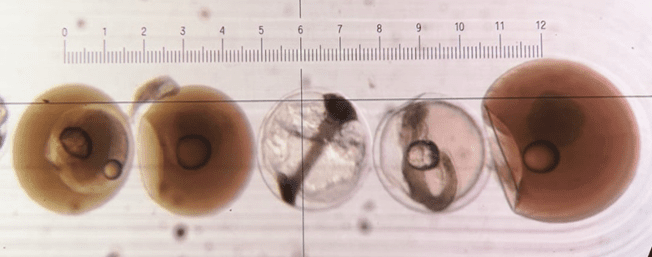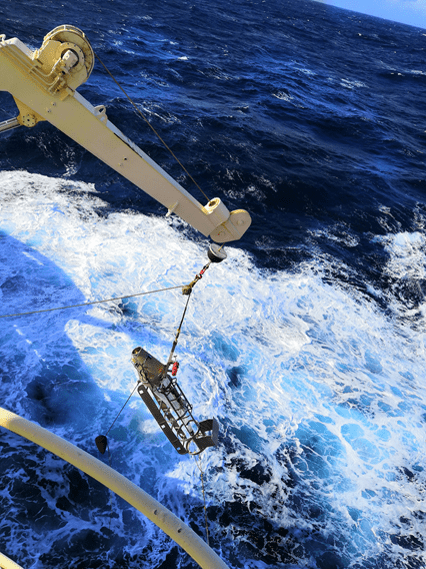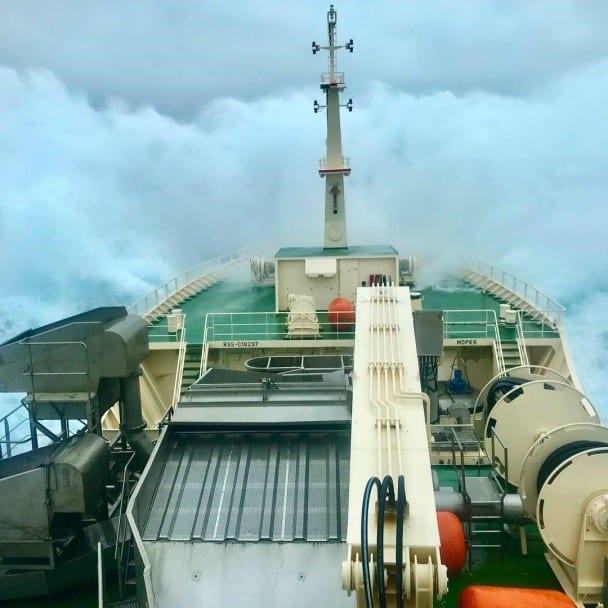Marine
Egg-cellent Sampling with Altaire – An Update
April 5, 2019 by Marine Directorate Communications No Comments | Category Fisheries, Marine Directorate general, Marine Directorate Science, Marine Directorate Surveys, Research Vessel Surveys
Survey: 0119H MFV Altaire (LK429)
Duration: 19 March – 1 April 2019
Objectives
- Carry out mackerel egg survey (ICES Triennial Survey), on the western shelf and shelf edge in the area from 53oN to 59o N.
- Collect fish samples, by trawling, for atresia and fecundity analysis back at the laboratory.

Typical fish eggs encountered during survey 0119H as photographed down a microscope. The two on the left are early stage mackerel eggs approximately 1 mm in diameter.
Marine Scotland chartered the large pelagic fishing vessel Altaire LK429 to undertake a survey of mackerel eggs amongst the plankton of the Northeast Atlantic. This survey is participated in by several European nations every three years and provides indices on the strength of the spawning stock of mackerel and horse mackerel. Both of these species are very important, commercially, to many European countries and providing data on stocks is vital. The full multi-nation survey covers the spawning area (South of Spain to the Northwest of Scotland and out to Rockall and Hatton Bank) over the spawning period (Jan-July) of both species (Jan-July).
This is the second of five of Scotland’s survey commitments to the project and concentrates on the shelf edge to the west of the Hebrides.
Sampling with the Gulf VII
 Altaire undertakes east-west transects over the shelf edge and the crew expertly deploy a plankton sampler a known as a Gulf VII at regular intervals along these transects. The sampler is towed at a steady speed to either 200 meters depth (which is below the depth limit of mackerel egg occurrence) or to within 5 meters of the seabed if this is shallower than 200 meters. Plankton is retained by the small mesh of the sampler and the amount of ocean water filtered is recorded. Marine Scotland scientists preserve and sort through the plankton identifying and counting the eggs to get a number per cubic meter of water.
Altaire undertakes east-west transects over the shelf edge and the crew expertly deploy a plankton sampler a known as a Gulf VII at regular intervals along these transects. The sampler is towed at a steady speed to either 200 meters depth (which is below the depth limit of mackerel egg occurrence) or to within 5 meters of the seabed if this is shallower than 200 meters. Plankton is retained by the small mesh of the sampler and the amount of ocean water filtered is recorded. Marine Scotland scientists preserve and sort through the plankton identifying and counting the eggs to get a number per cubic meter of water.
Although the survey got off to a windy start, Altaire easily handled the stormy conditions and many transects were completed; givina picture of mackerel egg numbers, and distribution to the west of Scotland in March. This data will be fed back into the overall survey, which will continue through the spawning season into July with many more nations taking part and Scotland undertaking three further cruises.
Further Information
- Egg-cellent Sampling with Altaire (survey 0119H programme)
- Previous Mackerel Egg Survey Blogs
- Pelagic Fisheries
- Egg Surveys
Tags: Altaire, fisheries, Hatton Bank, horse mackerel, mackerel, north east atlantic, plankton, research, Rockall, sampling, science, Survey, trawling



Leave a comment